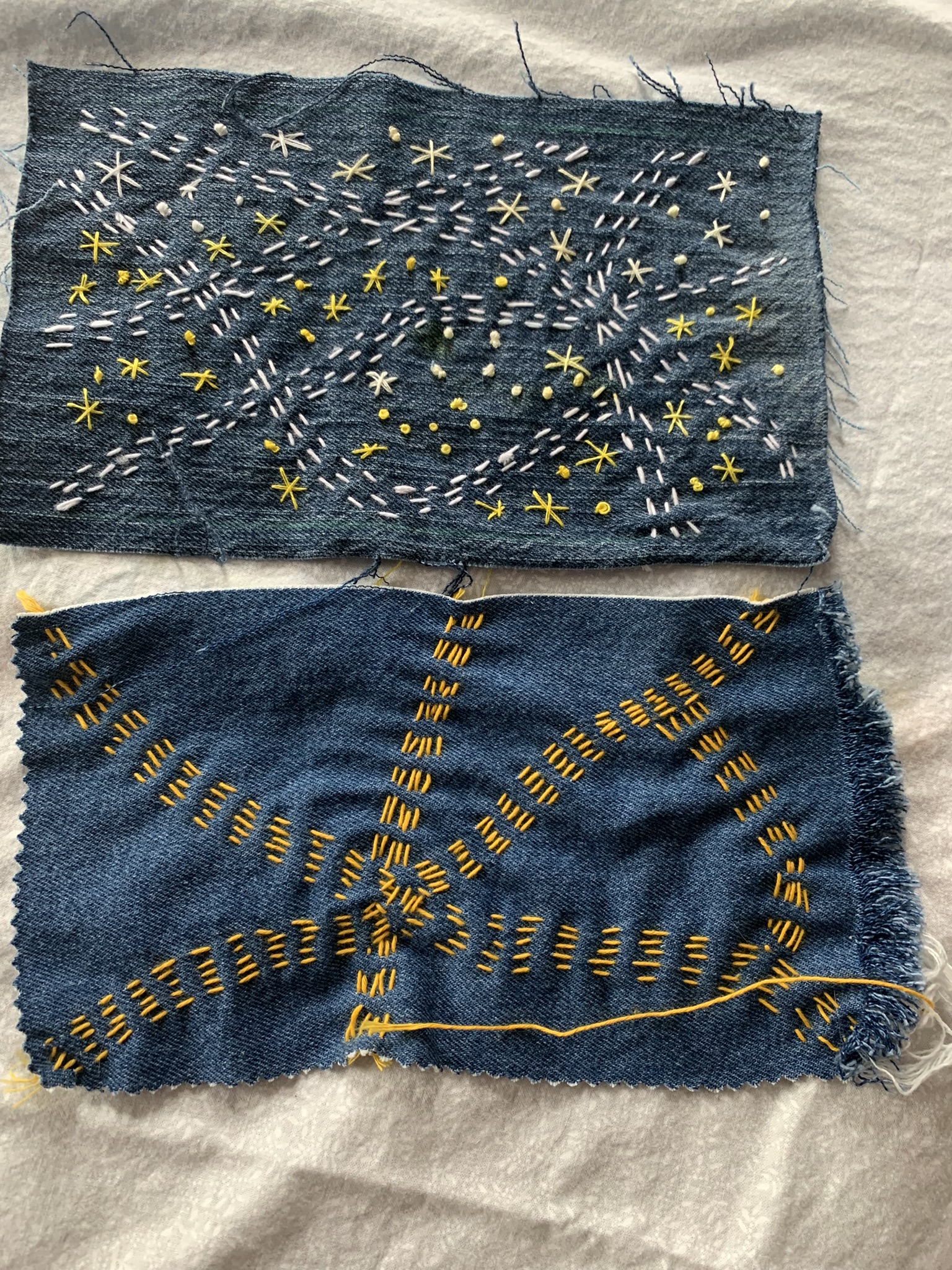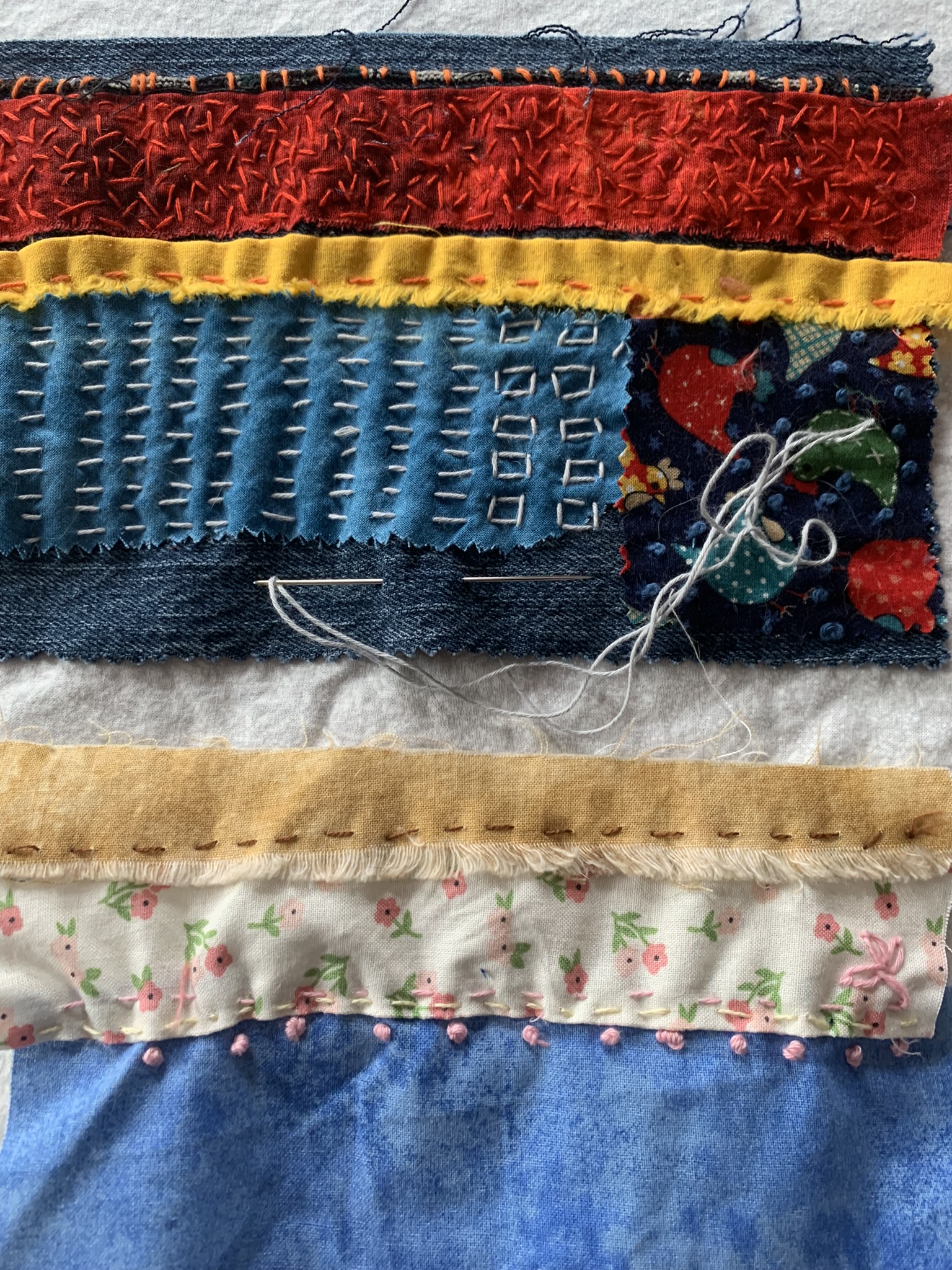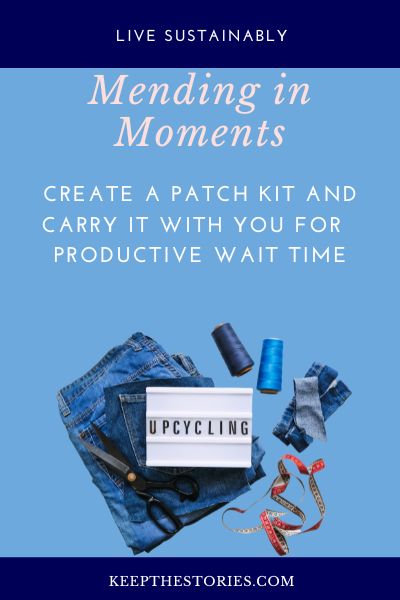For the Love Of Stitching
Mending is Practical – and Relaxing
Until this year, I have never tried to make any of my own clothes (a fact that now seems astonishing to me but that is a post for another day). However, I always was big on mending – and buying used.
My mom used to be astounded, even embarrassed that I would buy all my clothes at the thrift store and was quite happy to wear patches and repaired clothes. For my part, I couldn’t understand her objections since I was confident that my way was more cost-effective, especially since clothes that I would find in thrift places were frequently much better quality than I would have been able to afford if I bought new. In addition, I always wanted to avoid throwing out things that could be fixed. And last, but certainly not least, I really believe all the well-loved clothes have stories to preserve and to tell – and mends just add to their charm.
Visible Mending
I have continued both those practices all my life, even when for a time mending fell out of fashion. It will probably come as no surprise that I love the increased movement towards visible mending and mending as a fashion statement. Now I can claim I was mending before it was cool and trending. I am thrilled that more and more people are embracing the practice and making it into real art all while saving things from going into landfills.
If you are not familiar with the term visible mending, or if you are looking for more inspiration, check out the websites or Instagram feeds for these talented artists.
Tom of Holland (@tomofholland)
Kate Sekules (@visiblemend)
Mending as Meditation
I have a pile of old sweaters and old jeans that I work on as almost meditative practice when I have a few minutes. In fact, since late 2021, I have been starting most day with 15 minutes of slow stitching, on small pieces that have no designated purpose, or a few minutes on finishing touches like quilt bindings or repairing small holes in socks. In the past, I have not been very successful at sitting for meditation without my mind wondering but have found this to be quite effective in clearing my mind and focusing for the day.
Inspiration
Have you ever had one of those moments when you are hit with something that seems like such an obvious idea that you wonder how you took so long to discover it? I had one of those this week when I was doing my morning stitching. It occurred to me that instead of working on large mending projects like jean repairs, I could do a bunch of patches and have them ready to attach as required for repair or as part of an upcycle project. Ok, I hear you saying “Well that seems obvious. Do you really think that is such a big insight?”.
You would be right, of course, (and, BTW, ouch, LOL). I recognize that the is nothing new in this and many people work this way. However, I was not taking that approach so, at the time, it struck me as an AHA moment.
What appeals to me most about the ‘new’ way of working is the portability. As it happens I was anticipating a lot of waiting time this week at doctor and dentist appointments and between meetings. I added a few materials for patches to my small sewing kit and managed to have a pretty productive week. I even did some slow stitching was listening to music at an outdoor jazz event. Here are some of the pieces that I finished and will use as patches or to incorporate into a small story quilt.
Links – sustainable fashion
visible mending resources
Make Your Own Mending Kit
If you want to make your travel sewing kit, you don’t need much to start. For a basic portable mending kit, you will want to include:
- A variety of threads (my favourites include embroidery floss and sashiko thread)
- Fabric (I prefer reclaimed pieces -denim, cotton, linen, ribbon, lace… )
- Small scissors
- Needles (and a needle holder or needle case)
- Other nice-to-have things include a needle threader, thimble, and a thread catcher for loose bits
You will probably quickly discover your favourites and preferences and can expand your collection.

Sashiko patch finished this week (approx 10″x 5″ also suitable for two 5″x 5″) as well as sashiko stitched directly on a pair of favourite well worn jeans

A fun technique from a session called Meditativ Stitching with Katrine Stålstrøm presented at Making Zen Online Retreat. I feel that the bottom one is not yet finished.

One of my favourite approaches – boro, a Japanese style of patchwork. These are both still in progress. You can tell I am partial to rough edges and random stitches.
Make Your Own Mending Kit
If you want to make your travel sewing kit, you don’t need much to start. For a basic portable mending kit, you will want to include:
- A variety of threads (my favourites include embroidery floss and sashiko thread)
- Fabric (I prefer reclaimed pieces -denim, cotton, linen, ribbon, lace… )
- Small scissors
- Needles (and a needle holder or needle case)
- Other nice-to-have things include a needle threader, thimble, and a thread catcher for loose bits
You will probably quickly discover your favourites and preferences and can expand your collection.
Do you do mending?
Do you prefer visible or invisible repairs?
What are your favourite tools and strategies?
For more on mending and preserving textiles, you might want to visit these related posts.



I had one of those a-ha’s this week when I realized I shouldn’t be penny-wise and pound foolish.
This past weekend we needed to remove some small trees. I thought about renting a chainsaw to do the job, but I decided that using a hand saw is possible, it will be good to do some ‘manual labor’ (and I would feel satisfied for a job well-done once completed), and I could save around $50 on the rental fee.
Long story short, I was sweating up a storm, exhausted, and ‘wasted’ a few hours in the hot sun. I would have been done in 15 minutes had I just rented the chainsaw..
LOL – that is a good lesson and one that I find I have to keep learning. Too often, I find myself too influenced by the short-term costs of renting a tool – or hiring an expert for a few hours – with the result of putting in much more time, often with a great deal of frustration. Thanks for sharing your insight.